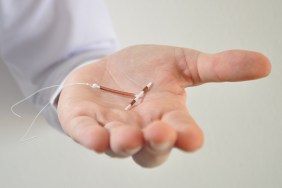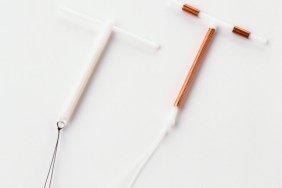Hormonal methods include birth control pills, shots, implants, and the vaginal ring. There are intrauterine devices, and barrier methods such as condoms, diaphrams, and sponges. Each method has its own pros and cons, but being informed can help you make a choice that’s right for your particular circumstances and your lifestyle.
The Pill
Birth control pills are considered to be safe, effective and convenient. They are easy to get with a prescription. Birth control pills are made of hormones; they are combination pills containing estrogen and progestin, and single pills of progestin. The hormones in these pills prevent eggs from leaving the ovaries so there’s no egg available for fertilization by the sperm. The pill also thickens the cervical mucus to keep sperm from reaching the egg. Combination pills are taken daily, and progestin-only pills are taken at the same time daily. This keeps the hormones in the woman’s body at the correct level. The pill is very effective for most women as long as it is taken correctly. Antibiotics and certain anti-seizure and HIV medicines may make the pill less effective. Vomiting, diarrhea and extreme obesity can also prevent the pill from working.
Birth Control Shot: Depo-Provera
The birth control shot is especially convenient for many women since its effects last for three months. It is commonly known by the brand name, Depo-Provera, or by the name of the medicine it contains, DMPA. This shot releases a hormone—progestin—into the body, and the progestin works in a similar manner to the birth control pill by preventing the egg from leaving the ovaries and making the cervical mucus thicken to block sperm from reaching the egg. The birth control shot is very effective, and provides reliable contraception as long as the woman gets it on a regular schedule every 12 weeks. Being two or more weeks late getting the shot will put you at risk for an unwanted pregnancy. Like other methods of birth control, Depra-Provera is effective only when used correctly.
Birth Control Sponge
Sometimes called by the brand name, the Today Sponge, this barrier method is a foam sponge inserted into the vagina and is considered safe and convenient. The sponge is made of plastic foam and contains a spermicide. The Today Sponge is the single contraceptive sponge currently available in the United States. It is soft, round, and approximately two inches in diameter with a nylon loop at the bottom for easy removal. Before having intercourse, the woman inserts the sponge deep into the vagina where it covers the cervix to block sperm from entering, and adds additional protection via the spermicide that prevents sperm from moving. Studies show the sponge is more effective for women who have never given birth, with 9 out of 100 becoming pregnant while using it. Women who have previously given birth have higher odds of unwanted pregnancy at 20 out of 100, and may want to have their partner use a latex condom to add more protection. The Today Sponge is convenient and affordable, at around $15 for a package of three, and most effective when used as directed and in conjunction with a condom.
Morning After Pill
The Morning After Pill is considered emergency contraception and is normally used to prevent a pregnancy following unprotected sex. It works for up to 5 days after the event and is available at most health centers and drug stores for $35-$60. The federal government ruled in 2013 that Plan B One-Step should be made available to anyone, regardless of age or gender. This pill makes it possible to prevent pregnancy after the fact, since it can take up to six days following sex for the sperm and the egg to meet and merge. Emergency contraception pills work by preventing the ovaries from releasing the egg for a longer period than usual, so that it is not available to be fertilized by the sperm. In the first 120 hours following unprotected sex, this method is very effective. It’s used when women forget to take their birth control pill or neglect to use other reliable birth control methods, if a partner’s condom breaks or slips off, and in other instances where the woman has unprotected vaginal sex.
Condom
Condoms are worn on the penis during intercourse and prevent pregnancy by collecting semen when the man ejaculates. This keeps sperm from entering the vagina where it can fertilize the egg. Condoms are made of latex or plastic, molded into the shape of a penis, and available in different styles and colors, including dry, lubricated, ribbed, and treated with a spermicide. One huge benefit of using a condom is the additional protection they can provide against sexually transmitted diseases. Condoms can be used with other forms of birth control for extra protection, and are safe, easy and inexpensive. They are used for vaginal, anal and oral sex. Condoms are most effective when used with a spermicide, or if the man pulls out prior to ejaculation. Latex condoms are especially effective at reducing the risk of common sexually transmitted diseases including gonorrhea, herpes and syphilis.
Diaphram
A diaphram can cost from $15-$75, and may last for up to two years. It is a shallow silicone dome-shaped cup that is inserted into the vagina to cover the cervix. To be effective, the diaphram must be inserted correctly and should be used with a spermicide cream, gel or jelly. The diaphram blocks off the opening to the uterus while the spermicide prevents the sperm from moving. When used correctly, the diaphram is reasonably reliable with only 6 out of 100 women becoming pregnant. Your partner can help reduce the odds of an unwanted pregnancy by using a condom as an additional layer of protection paired with the diaphram. This is also an excellent form of protection against sexually transmitted diseases not provided by the use of the diaphram alone.
Vaginal Ring
The vaginal ring is a small flexible ring women insert into the vagina, left in place for three weeks, and taken out for the remaining week each month. Commonly called by its brand name of NuvaRing, it releases the same hormones found in birth control pills, estrogen and progestin. These hormones make the cervical mucus thicker to hinder sperm that are trying to reach the egg, and they prevent the egg from leaving the ovaries. The vaginal ring is available by prescription and can cost from $15-$80 monthly. A new ring is inserted every month to keep the correct level of hormones in the woman’s body. Some antibiotic and antifungal medicines and certain supplements including St. John’s wort may make NuvaRing less effective. Consult with your physician if you have questions about medication interaction. The vaginal ring can be used in conjunction with a condom for another level of protection.
IUD
The IUD is a small, t-shaped device made of flexible plastic that is inserted into the uterus by a physician to prevent pregnancy. There are two types of IUDs available in the United States: the ParaGard IUD that contains copper and can be effective for up to 12 years, and the Mirena IUD which is designed to release a small amount of the hormone progestin, and is effective for approximately 5 years. IUDs are one of the most effective forms of birth control, with less than 1 in 100 women who use them correctly getting pregnant. Both types of IUD work by preventing the sperm from joining the egg. The Mirena IUD can prevent the egg from leaving the ovaries, and the progestin it releases also thickens cervical mucus to further block sperm movement. The ParaGard IUD is sometimes also used as emergency contraception after unprotected sex. If inserted within 120 hours of the event, it can reduce the risk of pregnancy by 99.9%. Most women can safely use the IUD, but it is not recommended for those with a pelvic infection, untreated cervical cancer or cancers of the uterus, or a uterine perforation. The physician can guide you and help you find the suitable size and shape that is appropriate and effective. Don’t use the ParaGard if you have an allergy to copper or Wilson’s Disease, an inherited condition that blocks the body’s ability to get rid of copper. Don’t choose the Mirena IUD if you have liver disease, have or may have breast cancer.








